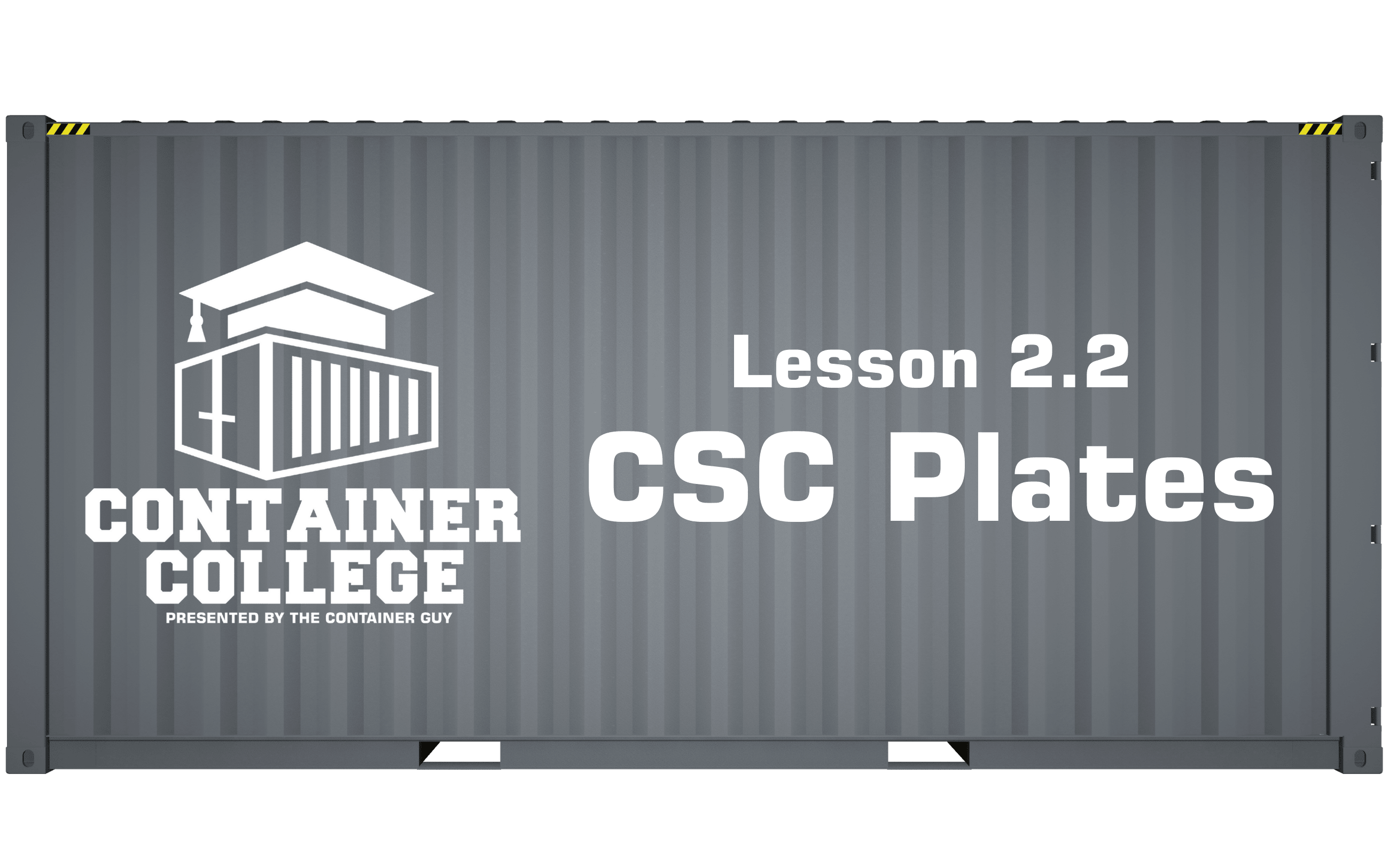
What is a CSC Plate?
CSC stands for “Convention for Safe Containers”, a set of international safety standards established in 1972 to ensure containers used in global transport are structurally sound and safe to handle.
The CSC Plate is a metal identification tag that certifies the container meets those safety standards. It must be affixed to any container used for international shipping.
TCG Insight: If you’re modifying a container into a structure that won’t be shipped overseas, the CSC plate isn’t required—but it can still tell you a lot about the container’s origin and specifications.
Why Are CSC Plates Important?
Here’s what the CSC Plate helps with:
- Verifies the container is safe for cargo and stacking
- Certifies that the container can be legally used in international transport
- Helps buyers confirm the manufacturer, date of build, and weight limits
- Provides structural data that’s useful for modifying or engineering inspections
How to Read a CSC Plate (Breakdown)
A typical CSC Plate includes several key pieces of information. Here’s what each section means:
1. Owner & Manufacturer Info
- Manufacturer’s Name
- Date of Manufacture (Month/Year)
- Identification Number / Serial Number
Example: MANUFACTURED BY CIMC / DATE: 06-2018
2. Container Type & Approval
- Type Code (e.g. 45G1 = 40ft High Cube General Purpose)
- CSC Safety Approval Number
- Country of Approval (Where it was certified)
3. Maximum Weight Ratings
- Maximum Gross Weight – Total allowable loaded weight
- Tare Weight – Weight of the empty container
- Net Weight (Payload) – Weight capacity for cargo
- Stacking Test Load Value – The maximum stacking weight it can handle safely
Tip: These specs are critical if you’re stacking containers for multi-level structures.
4. Racking Test Load Value
- Indicates how much lateral force the container can handle
- Useful for assessing sidewall strength, especially for large cutouts (windows/doors)
5. Maintenance & Inspection Details
- Next Inspection Date – Usually 5 years after manufacture, then every 30 months
- May show “ACEP” (Approved Continuous Examination Program) if it's enrolled in an ongoing inspection system
Do You Need a CSC Plate for Container Modifications?
In most modification projects, no, especially if the container will remain on-site as a structure or storage unit.
However, CSC Plates are still useful for:
- Confirming age and quality of the container
- Getting weight specs for engineering and planning
- Verifying that you're working with a legitimate container, not a cut-down or damaged shell



